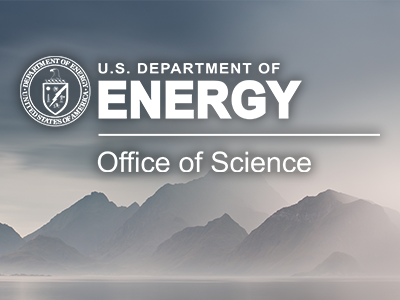DOE Awards $14 Million to Improve Climate Change Predictions
Published: 12 July 2022
New ASR projects using ARM data will give a better understanding of Earth’s atmosphere, support work to combat climate change
The U.S. Department of Energy (DOE) has announced $14 million in funding for 21 projects aimed at improving climate change predictions. The research projects will be funded for three years each through the Atmospheric System Research (ASR) program.
As extreme weather events and impacts of climate change continue to escalate, according to the DOE announcement, the ASR research projects will advance fundamental scientific understanding of atmospheric processes, ranging from cloud formation to weather in the Arctic.
“Climate-fueled weather events from drought, to fires, to hurricanes, and polar vortices are becoming more common and more intense and wreaking havoc on our communities,” says U.S. Secretary of Energy Jennifer M. Granholm. “We must expand our understanding of changing weather patterns and equip scientists, researchers, and lawmakers with every possible tool to tackle the climate crisis. President (Joseph R.) Biden and DOE are committed to protecting American communities from extreme weather events and fighting climate change through critical investments in science and research that illuminate pathways to decarbonization and broaden our scientific foundation.”
ASR advances understanding of the atmospheric system in a holistic, comprehensive fashion that addresses a range of interrelated climatic processes, resulting in improved earth system models that can increase confidence in decision and policymaking. These studies will use atmospheric data gathered by DOE’s Atmospheric Radiation Measurement (ARM) user facility.
“From aerosols and clouds to the poles of the Earth, these projects will really help the community understand the atmospheric processes behind climate,” says ASR Program Manager Jeff Stehr. “These scientists are going to really dig deep into the atmosphere to figure out how these things work.”
Following are the 21 principal investigators, institutions, and recommended projects:
- Rebecca Adams‐Selin, Atmospheric and Environmental Research Inc.: “Establishing a Holistic Understanding of Mesoscale Convective System Stratiform Precipitation Regions”
- Fiaz Ahmed, University of California, Los Angeles: “Thermodynamic and Non‐thermodynamic Controls on Deep Convection in ARM Observations”
- Osinachi Ajoku, Howard University: “Modeling Impacts on the Stratocumulus-to‐Cumulus Transition Associated with Southern Africa Biomass Burning Outflow Constrained by ARM Observations”
- Yunsoo Choi, University of Houston: “Incorporating ARM TRACER Campaign Data into a Fine-Resolution WRF‐Chem-SBM Data Assimilation Framework: Sensitivity Analysis of Microphysics and Thermodynamics to CCN Profile”
- Don Collins, University of California, Riverside: “Understanding the Impact of Pollution Aerosol from Los Angeles/Long Beach on Clouds and Radiation in and Upwind of the EPCAPE Study Domain”
- Andrew Dzambo, University of Oklahoma: “Surface, Aerosol, and Meteorological Controls on Arctic Boundary Layer Clouds: Observations and Simulations from MOSAiC and COMBLE”
- Delphine Farmer, Colorado State University: “Observational Constraints on Size‐Resolved Particle Deposition Across Landscapes”
- Anna Gannet Hallar, University of Utah: “Using ARM Data to Understand the Impact of New Particle Formation on Cloud Condensation Nuclei Concentration in Different Environments”
- Hannah Horowitz, University of Illinois, Urbana-Champaign: “Improving the Representation of Arctic Sea Salt Aerosols in Climate Models Using Observations from Field Campaigns and Remote Sensing”
- Zhiming Kuang, Harvard University: “Analyses of Cumulus Mixing Using ASR Aircraft Observations and LES Simulations”
- Kara Lamb, Columbia University: “Connecting Laboratory Experiments and In‐Situ Observations of Depositional Ice Growth”
- Zhanqing Li, University of Maryland: “Investigation of Surface‐Cloud Coupling over Land Using ARM Observations and Model Simulations”
- Kelly Lombardo, Pennsylvania State University: “Understanding the Life Cycle of Deep Convective Storms Travel”
- David Mechem, University of Kansas: “Using ARM Observations and Large‐Eddy Simulation to Constrain Cloud Processing of CCN in Boundary‐Layer Clouds over the Eastern North Atlantic”
- Ola Persson, University of Colorado, Boulder: “The Arctic Atmospheric Boundary‐Layer Structure and its Interactions with the Free Troposphere and Surface”
- James Smith, University of California, Irvine: “Ultrafine Aerosol Particle Formation and Impacts During EPCAPE”
- Ryan Sullivan, Carnegie Mellon University: “Potentially Large Contribution of Biomass‐Burning Aerosol to Global Ice Nucleating Particle Concentrations and Implications for Aerosol Lifecycle and Cloud Microphysics”
- Ivy Tan, McGill University: “Exploiting Ground‐Based Observations to Infer Arctic Surface Cloud Feedbacks”
- Peter van Leeuwen, Colorado State University: “Aerosol‐Cloud Interactions in Warm Clouds Using Advanced Causal Discovery”
- Anthony Wexler, University of California, Davis: “The Hygroscopicity and CCN Potential of Organic Aerosol Moieties”
- Mikael Witte, Naval Postgraduate School: “The Aerosol‐Cold Pool Connection: Impacts on Marine Low Cloud Morphology”
“We received 94 proposals from researchers from coast to coast,” says Stehr. “We want to thank everyone who took the time and did the hard work to submit proposals. We also want to thank the 61 members of our review panels for their time and thoughtful dedication. And we’re really happy to welcome a few new investigators and institutions to the ASR program this year.”
The awards were chosen by competitive peer review from proposals submitted to a funding opportunity announcement (FOA) under the ASR program. The ASR FOA was sponsored by the Biological and Environmental Research (BER) program within DOE’s Office of Science.
Once the Fiscal Year 2022 funding awards are finalized, principal investigators, project titles, abstracts, and team members will be added to the ASR projects web page.
Keep up with the Atmospheric Observer
Updates on ARM news, events, and opportunities delivered to your inbox
ARM User Profile
ARM welcomes users from all institutions and nations. A free ARM user account is needed to access ARM data.



















